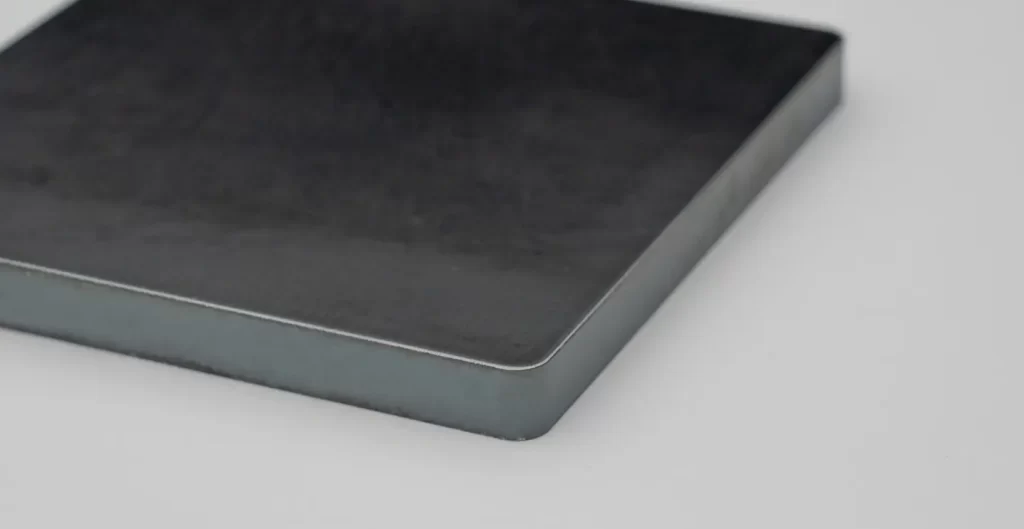BLOG » What is Carbon Steel? All you need to know
What is Carbon Steel? All you need to know
What is Carbon Steel
Before delving into the characteristics of carbon steel, let’s first clarify the definition of steel.
Steel is a type of alloy based on iron. Pure iron is brittle and prone to rust, making it unsuitable for industrial applications. To address this, carbon is added to iron along with elements like manganese and phosphorus, to create an alloyed material. The term steel specifically refers to those compositions with a carbon content ranging from approximately 0.02% to 2.14%. In contrast, iron has classified to have below 0.008%. of carbon content.
As the carbon content in iron increases, it becomes harder, but at the same time, it becomes more brittle. While it gets less prone to deformation under force, it also becomes more susceptible to breaking, especially when subjected to sudden impact or forces beyond its tolerance. This is why materials used for machinery and structures need to possess both hardness and strength.
Steel contains just the right amount of carbon to balance hardness and strength in iron.
As mentioned, various other elements like manganese, chromium, and titanium are added to steel to create alloy steel and special steel, each with distinct characteristics. Special steels with features like rust resistance or high-temperature resistance are developed based on specific purposes.
Among the different types of steel, carbon steel refers to the steel that does not fall under alloy steel or special steel. In other words, carbon steel is steel in its natural state, without the addition of specialized elements or processes. Carbon steel is defined by having an elemental content of elements other than iron and carbon that is below specified values. For instance, chromium is limited to 0.3% or less, and titanium to 0.05% or less.
Carbon steel is classified based on its carbon content, resulting in three categories: low carbon steel, medium carbon steel, and high carbon steel.
Low carbon steel refers to materials with a carbon content ranging from 0.02% to 0.25%, medium carbon steel has a carbon content between 0.25% and 0.6%, and high carbon steel contains 0.6% to 2.14% carbon.
The most widely used type of steel: What is SS400?
SS400 belongs to a category of SS materials (Structural Steel) known as general structural rolled steel.
SS400 is a structural steel with high tensile strength, equal to 400N/mm² or more.
SS400 is known for being more affordable and accessible compared to other metal materials. It is also easy to process through methods like welding and cutting. Additionally, it is available in sheet form and is commonly used for sheet metal processing, laser cutting, and similar applications. However, SS400 cannot undergo heat treatment (annealing). It is also prone to rusting, so it requires anti-corrosion treatments like plating or blackening.

Applications of SS400
SS400 is used as a structural material for bridges, ships, and more, spanning a wide range of applications from machinery to construction. When thinking about creating something using iron or steel, it’s not an exaggeration to say that SS400 is the material that designers first consider. SS400 is a material that is widely and commonly used.
Advanatages of SS400
- Affordable and readily available
- Easy to weld
- Suitable for processing such as sheet metal work and cutting
- Highly versatile
It is a widely distributed and readily available material, making it more affordable compared to other metal materials. It is softer than materials like stainless steel, making it easy to process through methods like cutting and sheet metal work, enabling various applications. Due to its low carbon content and resistance to heat-related effects, it is also suitable for welding. However, when welding thicker materials (25mm and above), it may be better to use welding-specific materials.
Disadvantages of SS400
- Cannot undergo heat treatment (annealing)
- Relatively soft among iron and steel materials
- Prone to rust: requiring corrosion prevention such as plating or painting
When stronger materials are required, other options need to be considered. Additionally, due to its low carbon content, SS400 cannot undergo heat treatment, preventing the attainment of surface hardness through such processes. Furthermore, as it is susceptible to rust, it requires protection through plating, painting, or black oxide (oxidation film).
Common Surface Treatments for SS400
Given its susceptibility to rust, SS400 often undergoes surface treatments such as nickel plating or chrome plating. In cases where high corrosion resistance is not required, such as in areas not exposed to water, black oxide treatment might be the best solution.
List of Common Surface Treatments for SS400
- Iron tetroxide film (blackening): Iron surfaces are oxidized using chemicals to create a coating of tri-iron tetroxide (Fe3O4). This help preventing corrosion.
- Electroless nickel plating: Nickel plating is applied through chemical reduction. Combined with heat treatment. It increases surface hardness and improves resistance.
- Hard chromium plating: Thicker than decorative chromium plating, this plating enhances wear resistance and sliding properties.
- Trivalent chromate: A post-plating treatment performed to improve plating quality, primarily used for electro-galvanized plating.
Conclusion
Carbon steel is an essential and versatile material that finds its place in numerous industries and applications. Among its various types, SS400 stands out as a widely used and reliable grade, appreciated for its mechanical properties and cost-effectiveness. Its strength, weldability, and machinability make it a preferred choice for structural and engineering purposes. By understanding the characteristics and benefits of SS400 and other carbon steel variants, engineers and manufacturers can make informed decisions when selecting materials for their projects. With its remarkable properties and wide-ranging utility, carbon steel continues to shape the modern world of manufacturing and construction.
